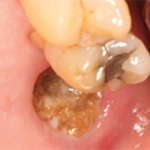Dr. Insogna noted that because increased bone breakdown appears to be the most common cause for accelerated bone loss, especially following menopause, the initial focus of drug discovery was inhibiting bone breakdown. Because the anti-resorptive agent alendronate is generic, inexpensive and effective, it is a good first-line therapy for compliant patients without significant heartburn or dysphagia history.
Risedronate is somewhat less potent than alendronate, but tolerance is better and patients tend to be more compliant compared to treatment with alendronate. Zoledronic acid is the most powerful bisphosphonate, and a 2007 randomized, double-blind, placebo-controlled clinical trial in the New England Journal of Medicine demonstrated a 35% risk reduction in clinical fractures.3
Dr. Insogna recommended physicians consider a drug holiday in patients after five-to-seven years of continuous therapy with an oral bisphosphonate, or after three years of zoledronic acid, so long as the bone mineral density has been stable and there has been no height loss or fragility fractures in the preceding year. Continuation of therapy with an agent such as alendronate may be indicated for patients older than age 76, those with greater than a 3% decrease in total hip bone mineral density after two years and those with a lower femoral neck T-score (i.e., -2.5 or less) at the end of five years of therapy.
More severe potential bisphosphonate side effects, such as atypical femur fractures or osteonecrosis of the jaw, are exceedingly rare, Dr. Insogna said. For example, for every 10,000 high-risk patients on bisphosphonate treatment, 100 hip fractures and 750 other fractures will be prevented with no more than three to six atypical fractures expected. Nevertheless, a thorough dental exam is recommended before starting bisphosphonate therapy, and it is important to listen to patients on therapy when they note femoral shaft pain—this should prompt further evaluation with a radiograph.
Dr. Insogna discussed several other medications for osteoporosis, including raloxifene (a selective estrogen receptor modulator), denosumab (a receptor activator of nuclear factor kappa-Β ligand [RANKL] inhibitor), and the parathyroid hormone teriparatide. He noted that advantages to teriparatide include the direct effects on the pathophysiologic issues in osteoporosis, namely the increase in osteoblast and osteocyte apoptosis, the decrease in osteoblast number, the decrease in bone formation and bone strength and the reduced risk of vertebral fractures.
Conclusion
Rheumatologists should take note of the lessons imparted by Dr. Insogna given the number of older patients or individuals treated with corticosteroids in the typical rheumatology practice who may be at risk for, or already have, osteoporosis. It might be commonplace to “break a leg” in entertainment, but no such thing should ever occur unnecessarily in a clinician’s practice given our understanding of, and ability to treat, osteoporosis today.


